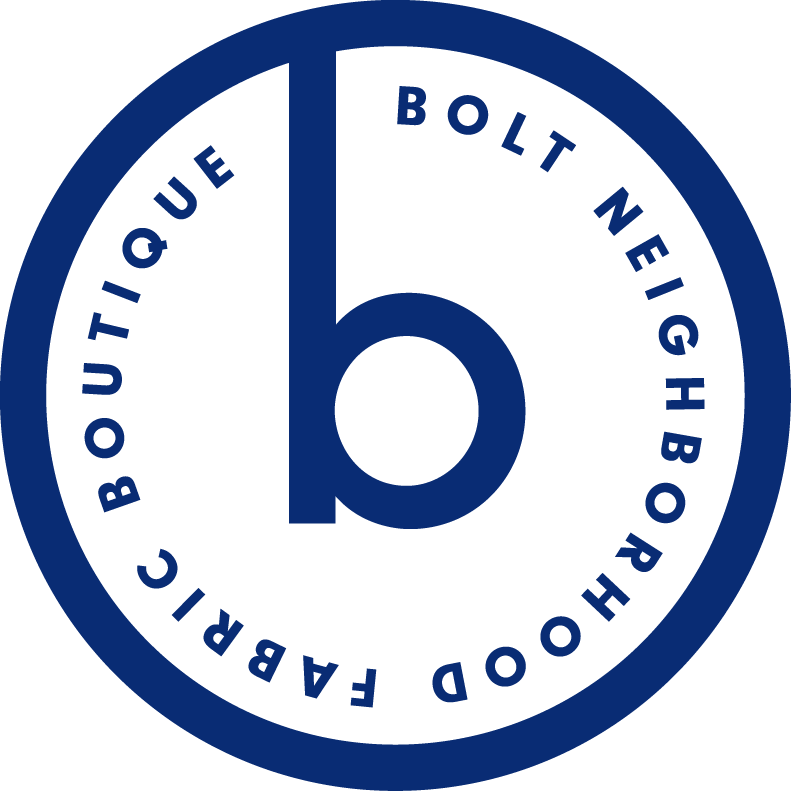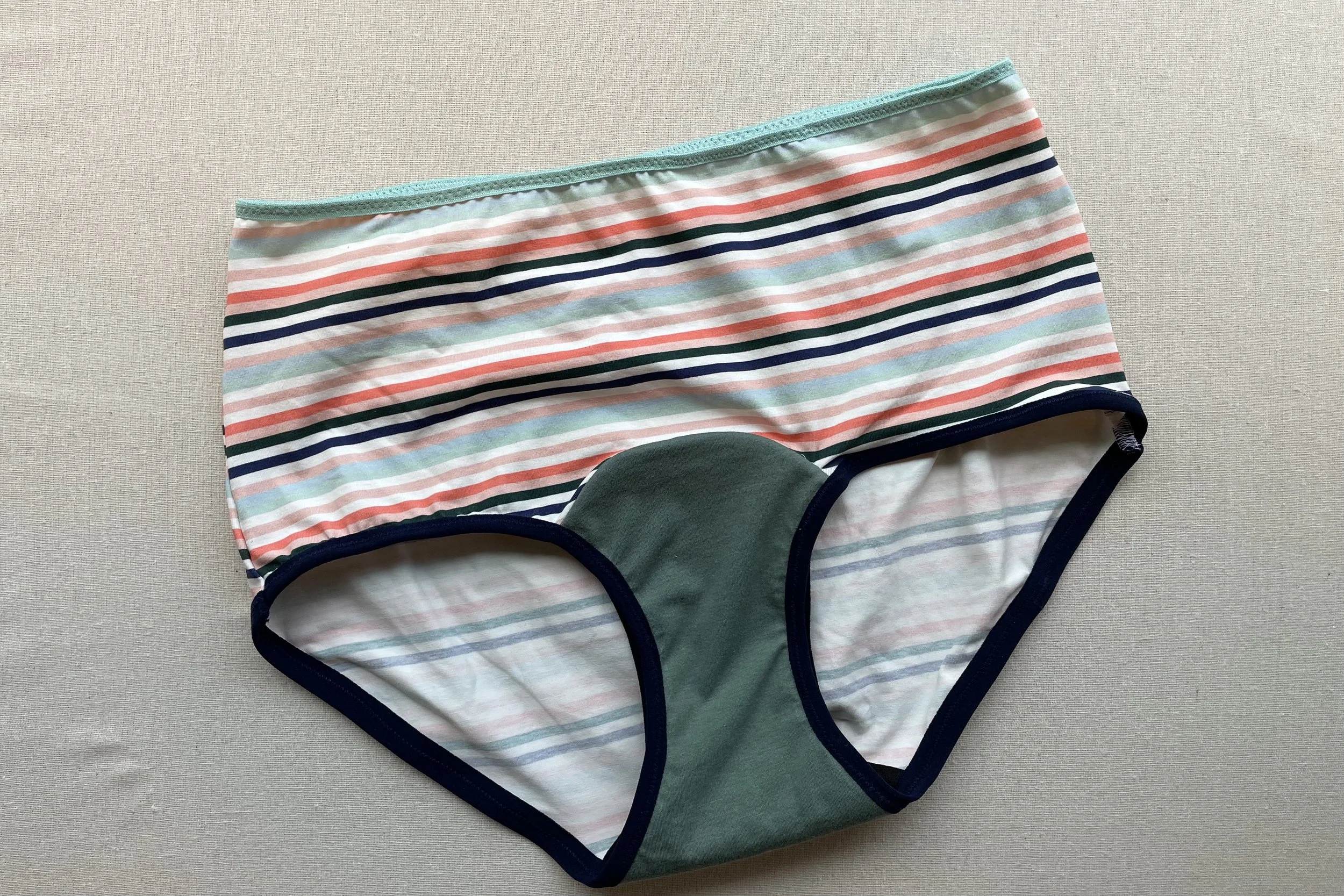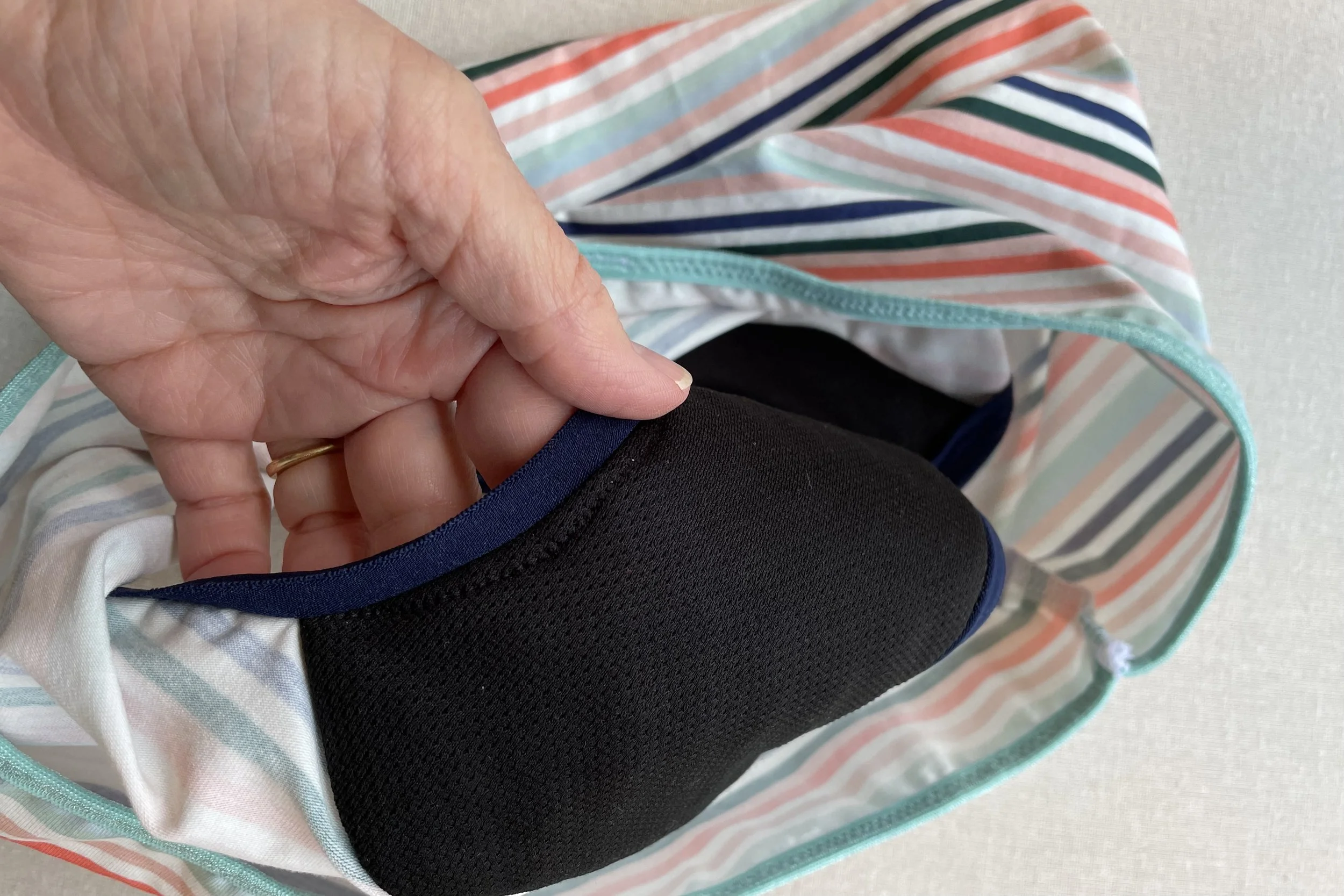Pattern Review: Period Panty Sewing
February 2022
Written by Anne (Bolt Staff)
Period panties have hit the shelves of many RTW clothing manufacturers recently but they come with a high price tag upwards of $30/pair. I know I can’t afford to stock up on a good amount of pairs to get me through a monthly period. Luckily, you can make yourself some pairs at a lower price point!
I’ve only seen one pattern specific to making period panties. However, there are two pattern designers’ tutorials I am going to highlight here that I used to make some pairs of period panties. I purchased the Sophie Hines Period Panty mini kit(gusset materials only) and the Tilly and the Buttons Iris Knickers Pattern. Both Sophie Hines and TATB have tutorials on their websites which walk you through the steps of altering an undie pattern into a period panty. In theory, any undie pattern would work.
A good first step is to make the undie pattern of your choice in a regular jersey knit to work out any sizing or fit issues. Next, source your special gusset materials for making a period panty. Both tutorials I mentioned will detail the materials needed and where to find them. I had to toggle between the two tutorials since the exact materials were different in each but once I had it sorted, I used the TATB tutorial since that was the pattern I was making.
Gusset material consists of a wicking layer, inner absorbent layer and outer waterproof jersey layer
You will need some tracing paper because the main adaptation is making the gusset piece longer to offer more coverage against leaks. You can also customize how much absorbent coverage you want in the gusset. Both tutorials include pictures and text to help you with the pattern changes.
Once you’ve got your new pattern pieces drafted, it’s time to sew! There are a few initial steps to sewing the gusset which are different than the regular sewing instructions. This helps create an enclosed gusset for further protection against leaks. A wider width polyester fold over elastic is best for the leg openings but feel free to use lace or other types of elastic for the waist. Then you can switch over to the pattern instructions to finish your period panty.
The trickiest part of sewing the gusset was some puckering with the curved edge of the main fabric around the gusset. There are multiple layers in that area with the main panty fabric being the thinnest and most likely to shift around while sewing. I had to unpick 2 times and it still has some gathers there. I’m not going to be too fussy about it since it’s not visible to anyone except me. And you don’t want any extra holes made by the sewing needle into the waterproof layer. I was more successful with not having puckers on the second pair mostly because I was aware of the puckering problem and I also used a ton of Wonderclips. I’ve found these work really well when sewing knits in general!
I’ve only tried the undies on a low flow day. They were comfortable and didn’t feel as bulky as I thought they would. These undies would also work great for bladder leaks and for potty training using a child’s undie sewing pattern. I’m ready to lessen the amount of hygiene product waste that goes into the garbage each month by having some more pairs of washable, reusable period panties.


